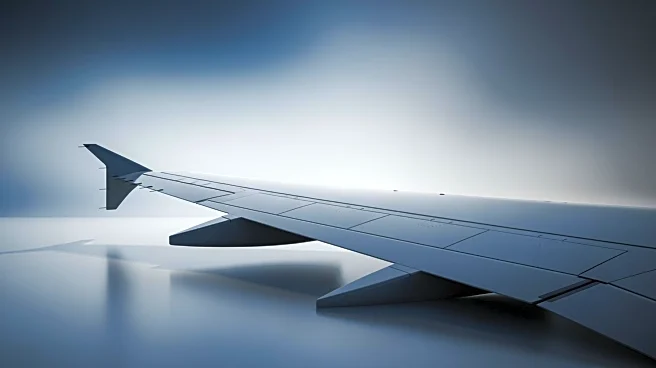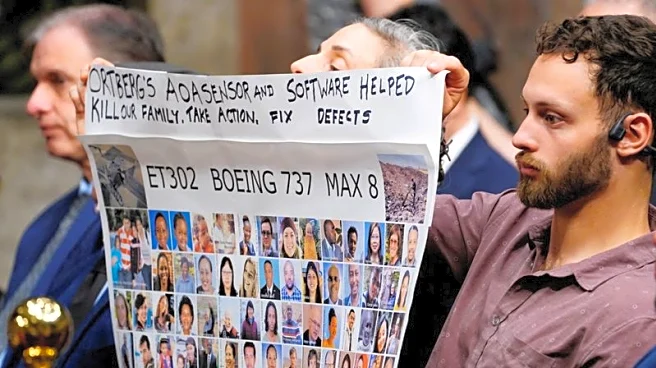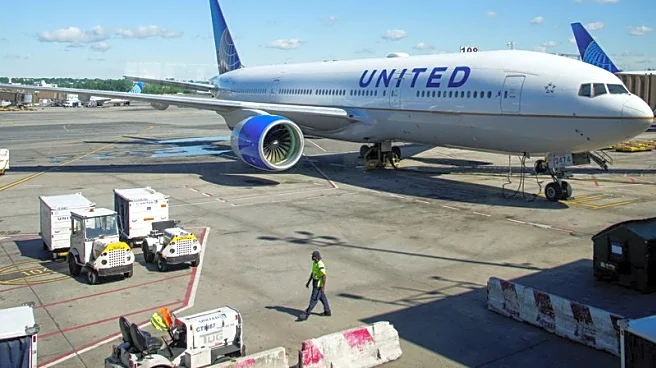What's Happening?
A federal court jury in Chicago has awarded over $28 million to the family of Shikha Garg, a United Nations consultant who died in the 2019 crash of a Boeing 737 Max jetliner in Ethiopia. The verdict was
reached after a weeklong trial, marking the first civil trial related to the disaster that killed all 157 people on board Ethiopian Airlines Flight 302. Boeing has agreed to pay an additional $3.45 million to Garg's husband, Soumya Bhattacharya, bringing the total compensation to $35.8 million. The aircraft maker has settled most of the wrongful death lawsuits related to the crash, with less than a dozen remaining unresolved. Boeing has accepted responsibility for the crash, and the jury was tasked with awarding damages for loss of income and grief suffered by Garg's family.
Why It's Important?
The jury's decision highlights the accountability of Boeing in the tragic crash and sets a precedent for corporate responsibility in the aviation industry. The substantial compensation reflects the impact on the victims' families and underscores the importance of safety standards in aircraft design. Boeing's acceptance of responsibility and settlement of most lawsuits indicate a significant financial and reputational impact on the company. The case may influence future litigation and regulatory scrutiny in the aviation sector, prompting discussions on safety measures and corporate transparency.
What's Next?
Boeing's decision to settle the case without appeal suggests a strategic move to resolve legal proceedings related to the crashes. The company may focus on settling remaining lawsuits and enhancing safety protocols to prevent future incidents. Regulatory bodies may increase oversight on aircraft design and safety compliance, potentially leading to stricter regulations. The aviation industry will likely monitor Boeing's actions closely, as the case sets a precedent for corporate accountability in aviation safety.
Beyond the Headlines
The case raises ethical questions about corporate responsibility and transparency in the aviation industry. It highlights the need for robust safety measures and clear communication to prevent similar tragedies. The legal proceedings may prompt discussions on the balance between technological advancement and passenger safety, influencing future aircraft design and regulatory policies.















